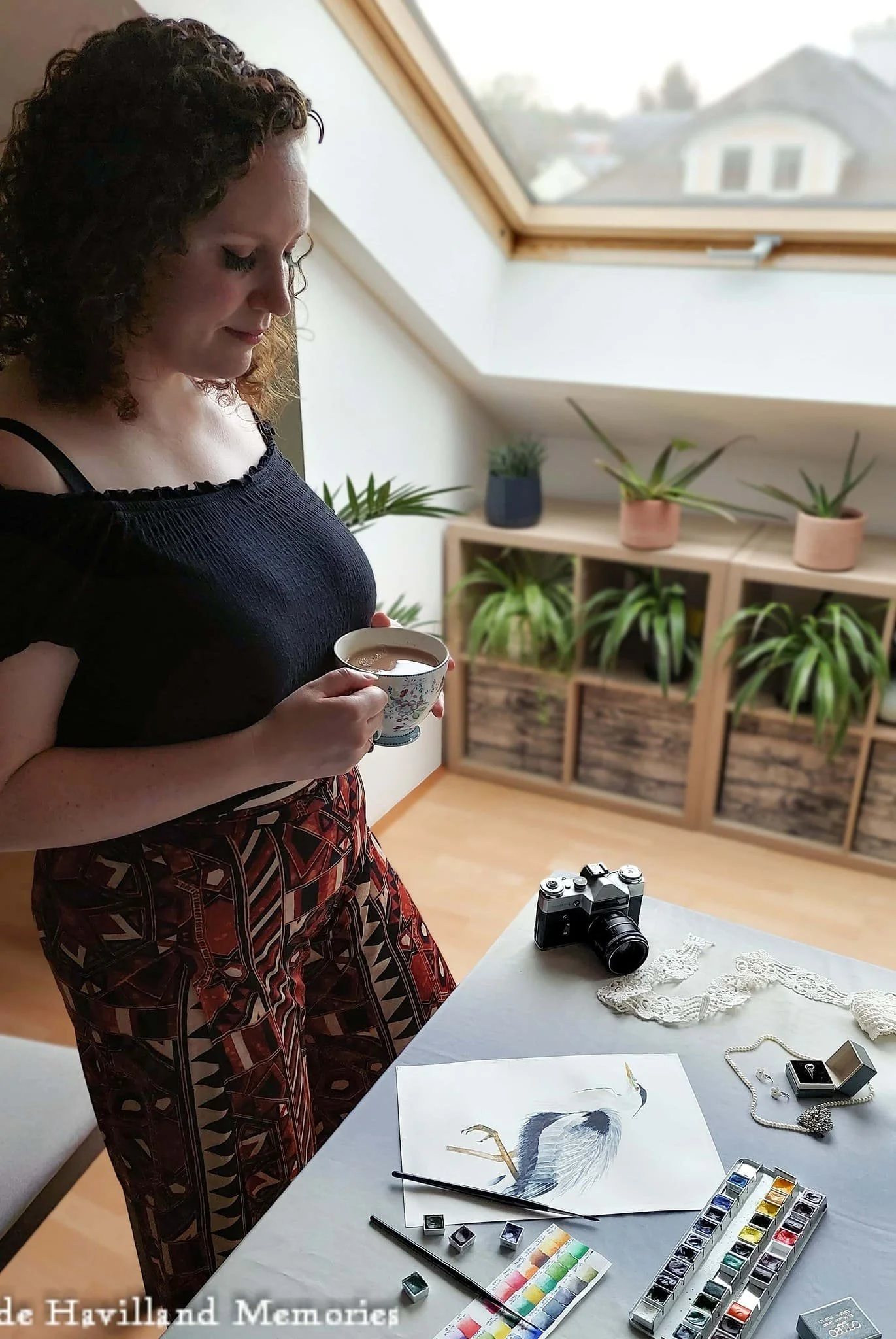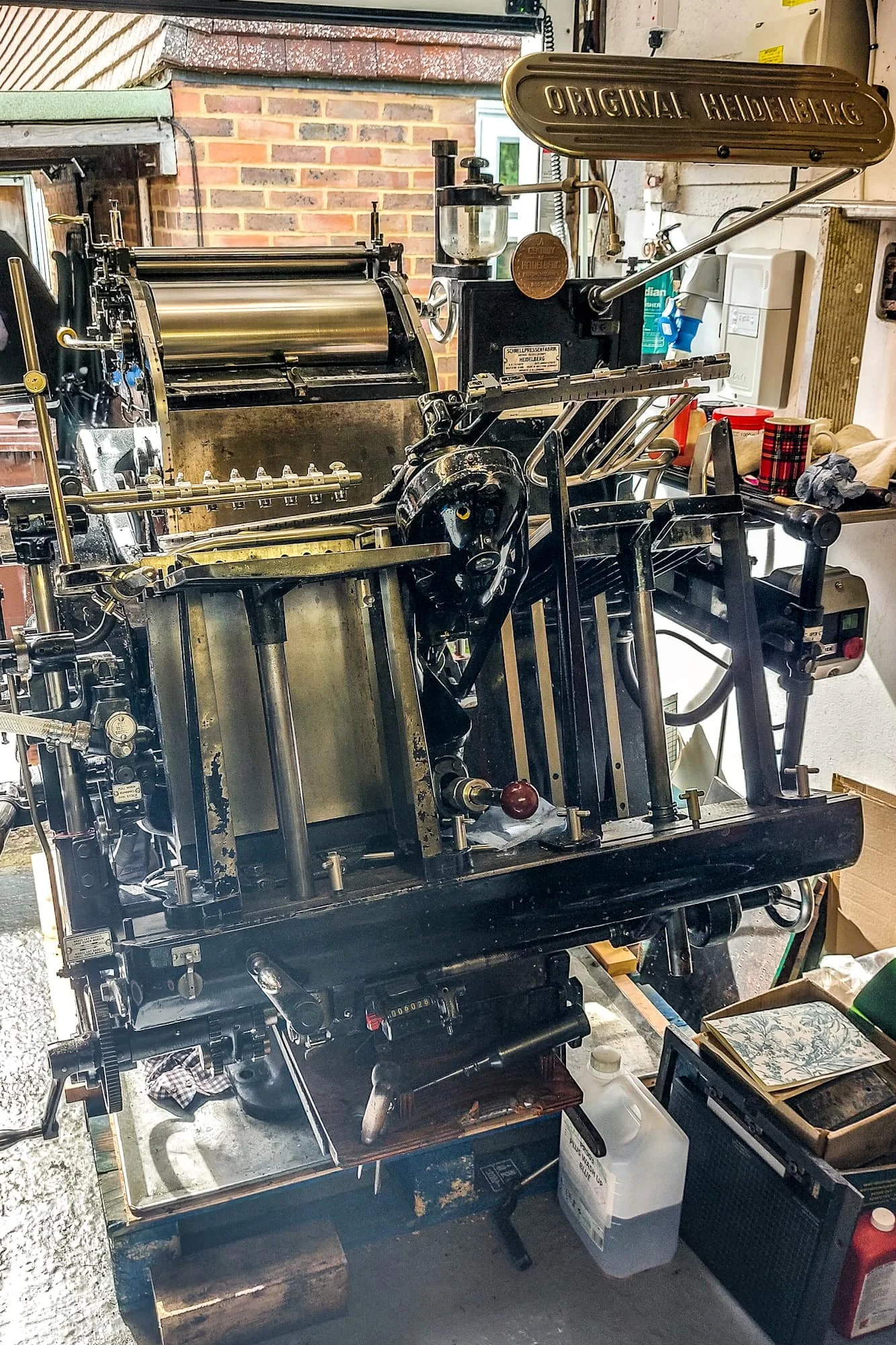Satellites to Stationery
What happens when a satellite engineer's hands stop working, and how can creativity emerge from constraint? Florrie de Havilland explains all on the Creativity Found podcast.
Florrie de Havilland in her studio
When life throws unexpected challenges our way, creativity can become a powerful tool for healing and transformation. This is beautifully illustrated in the story of Florrie de Havilland, a mechanical engineer turned creative entrepreneur whose journey from satellite testing to letterpress printing demonstrates the profound connection between creativity, wellbeing, and personal reinvention.
Florrie's creative journey began in childhood, with her artistic tendencies encouraged particularly by her grandmother, who was accomplished in everything from knitting and sewing to watercolour painting. Though Florrie continued art education through A-levels, her professional path initially led her to mechanical engineering and eventually to an impressive career in the space sector. Working in Germany as a thermal test manager for satellites, she achieved the distinction of being the first woman in Europe to hold this position, despite the challenge of learning German simultaneously.
Her career trajectory changed dramatically when health issues forced her to take two years away from work. Facing a neurological condition that affected the function of her hands and arms—the very tools essential for most creative pursuits—Florrie found herself at a crossroads. Rather than surrendering to limitations, she slowly began exploring watercolour painting and calligraphy, areas she had long been interested in but hadn't pursued professionally. The irony wasn't lost on her: with hands that sometimes wouldn't cooperate enough to brush her teeth, she was attempting detailed artistic work that required fine motor control.
This period of creative exploration provided more than just a pastime during recovery. As Florrie explains, "At that point in time there was no way I could have gone back to work, and I would have had all the controls sort of taken away. But being able to experiment like that gave me something to do and feel like I was getting a bit of my life back." The creative process became a way to reclaim agency when illness had stripped away so much control.
After returning to work briefly, the demands of being on-call for satellite testing eventually proved incompatible with managing her health condition. This led to another pivot—working in a print shop to learn the technical aspects of printing, which would later prove invaluable for her own business. This experience sparked her interest in letterpress printing, a traditional technique where designs are physically impressed into paper, creating both visual and tactile dimension.
Today, Florrie runs her own creative business specializing in bespoke wedding stationery, calligraphy, and letterpress printing. The centerpiece of her operation is "Penelope," a 1.25-ton vintage printing press from 1960 that requires meticulous maintenance and skilled operation. There's something profoundly symbolic about her journey—from controlling sophisticated satellite testing equipment to mastering this massive mechanical press, both requiring precision, patience, and technical expertise.
Penelope the letterpress printer
What makes Florrie's story particularly compelling is how she's integrated her engineering mindset with artistic sensibility. She approaches calligraphy with an engineer's appreciation for rules and systems, explaining: "I quite like having the rigidity and the rules and then figuring out how to mess with them." This intersection of technical and creative thinking allows her to create truly personalized wedding stationery that reflects each couple's unique story, right down to including meaningful symbols like a teapot to honor a departed grandfather.
Beyond the personal satisfaction of creative work, Florrie finds purpose in contributing to meaningful moments in others' lives. She collaborates with the Make-A-Wish Foundation, creating materials for events like book signings for children whose wish is to become authors. "It feels really lovely to be able to give back in that way and be creative and have all of this sort of input and know that I'm making a difference to somebody's life," she reflects.
Florrie's journey reminds us that creativity isn't just about making beautiful things—it's about finding new ways forward when traditional paths become inaccessible. It's about adapting, problem-solving, and discovering community in unexpected places. As she puts it when describing fellow letterpress enthusiasts: "When you meet some letterpress friends it's fantastic because they're just as crazy as you are."
Listen here, or wherever you like to get your podcasts.





